The last phase of World War II witnessed the atomic bombing of the Japanese cities of Hiroshima and Nagasaki by the United States on August 6 and 9, 1945. Several countries have experienced nuclear threats since then in different corners of the globe. Notwithstanding years of accumulating nuclear warheads, Hiroshima and Nagasaki remain the sole targets of a direct nuclear attack. Interested in learning more about the aftermath of these incidents? To understand the radiation impacts of Hiroshima and Nagasaki on its locals or to know about the present conditions of the survivors, look through this post featuring 25 Facts About Hiroshima And Nagasaki Today.
In the decades following the Hiroshima and Nagasaki bombings, the survivors have become one of the longest-studied groups in health research ever. An American-Japanese partnership called the Radiation Effects Research Foundation has studied about 94,000 survivors of the bombings.
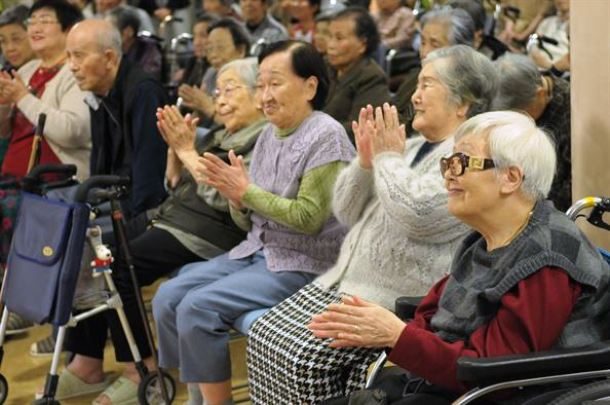 Source: smithsonianmag.com
Source: smithsonianmag.com The oleander is now the official flower of the city of Hiroshima because it was the first flower to bloom again after the explosion of the atomic bomb.
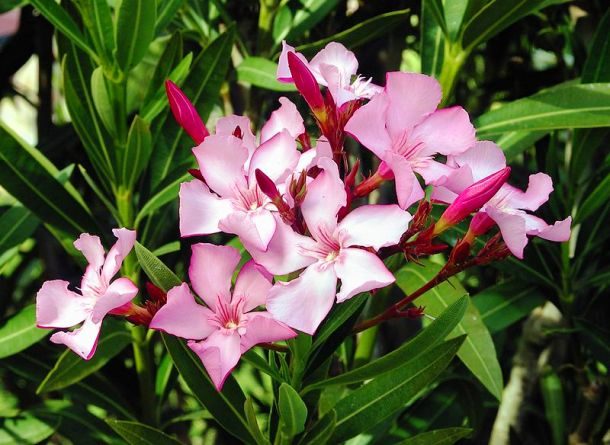 Source: thehistorypress.co.uk
Source: thehistorypress.co.uk According to recent scientific studies, the survivors received an average dose of 210 millisieverts of radiation. In comparison, a head CT scan delivers a dose of about 2 millisieverts and flying across the US delivers a dose of about 40 microsieverts.
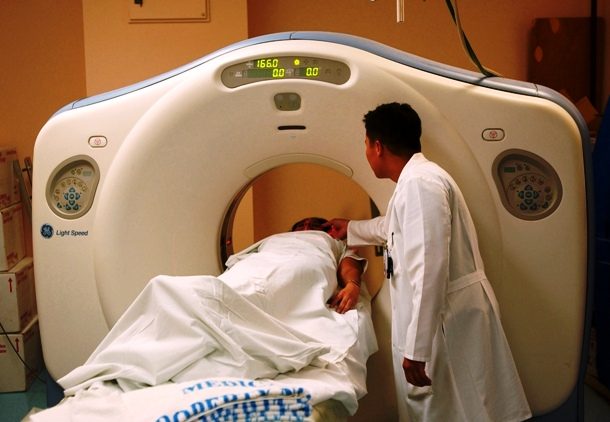 Source: smithsonianmag.com
Source: smithsonianmag.com On the day of the nuclear attack, the population of Nagasaki was estimated to be about 260,000. Today, Nagasaki is home to almost half a million people. It's still considered a backwater town in Japanese terms.
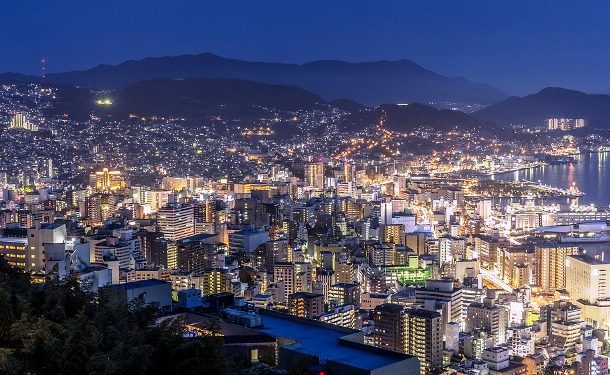 Source: concreteandkitsch.com
Source: concreteandkitsch.com Six ginkgo trees, located just about a mile from the bomb site in Hiroshima, suffered extreme damage in the blast. Surprisingly, they all survived and new buds soon emerged from their burnt trunks. Consequently, the ginkgo tree is now a symbol of hope in Japan.
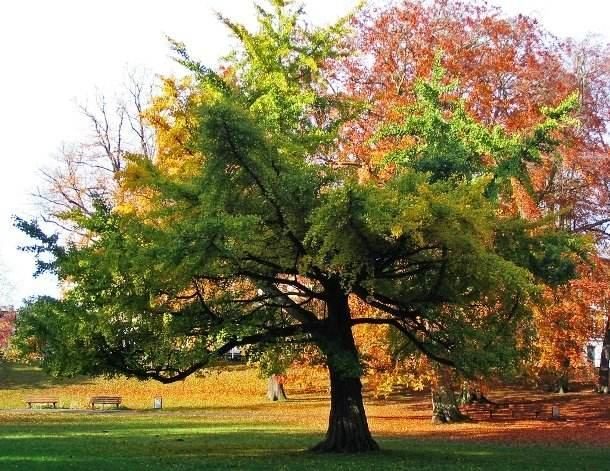 Source: bbc.com
Source: bbc.com After the first bomb exploded in Hiroshima, some unsuspecting survivors traveled to Nagasaki only to be bombed again. It was discovered that a total of 165 people (known as double survivors) survived both bombings.
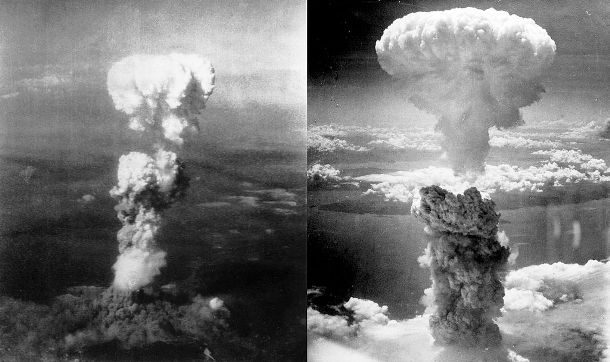 Source: history.com
Source: history.com In May 2016, Barack Obama became the first sitting US President to visit Hiroshima. He visited the Hiroshima Peace Memorial Museum and laid a wreath at the cenotaph in the Hiroshima Peace Memorial Park, which commemorates the victims of the atomic bombing.
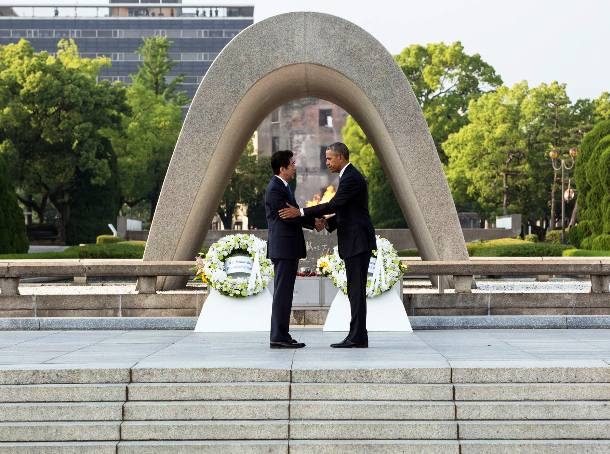 Source: nytimes.com
Source: nytimes.com In 1955, the Nagasaki Peace Park was opened at the original bomb site in Nagasaki. Located in north end is the 30-ton Peace Statue created by local sculptor Seibo Kitamura. It is said that the statute’s right hand is raised upward to point to the threat of nuclear weapons while the horizontally extended left hand symbolizes peace.
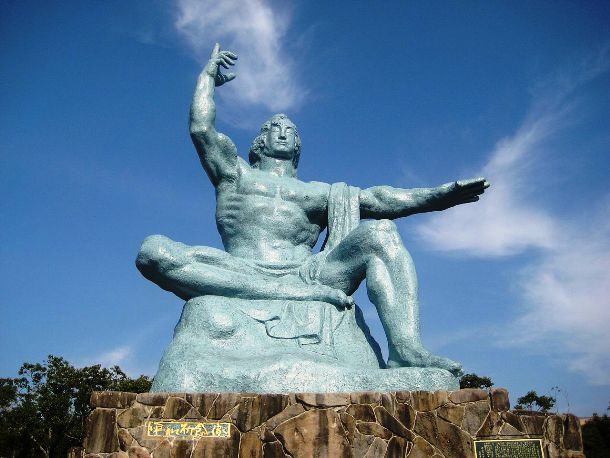 Source: jnto.go.jp
Source: jnto.go.jp The Japanese word for the surviving victims of the atomic bombings of Hiroshima and Nagasaki is Hibakusha. The word literally translates as "explosion-affected people."
 Source: independent.co.uk
Source: independent.co.uk The capital of the Hiroshima Prefecture, Hiroshima is the headquarters of the Mazda Motor Corporation, the famous Japanese automobile producer.
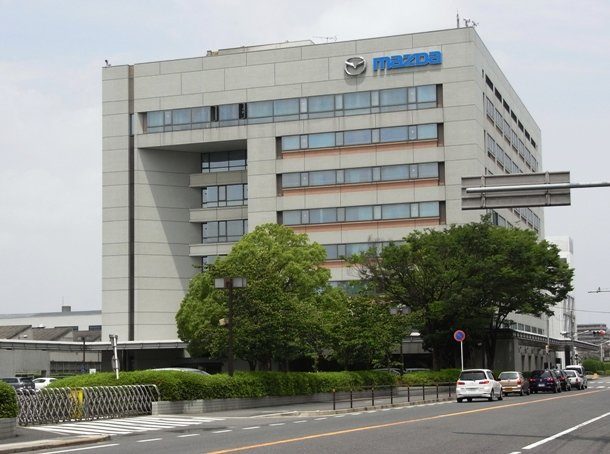 Source: usatoday.com
Source: usatoday.com Every year on August 6, the Hiroshima Peace Memorial Park holds the Hiroshima Peace Memorial Ceremony. Speeches are given by the Japanese Prime Minister and the Mayor of Hiroshima and, at exactly 8:15 (the time of the explosion), a one-minute silence for the victims is observed.
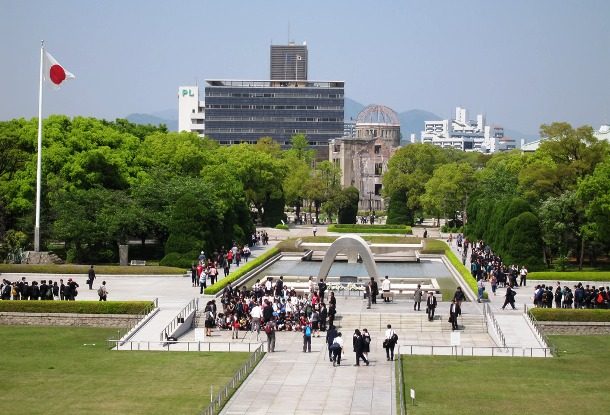 Source: visithiroshima.net
Source: visithiroshima.net In 2011, Japan was hit by a devastating tsunami that flattened hundreds of coastal towns and villages in much the same way as Hiroshima and Nagasaki were wiped out by the bombs. The photos of the tsunami-stricken areas are disturbingly similar to the pictures taken in Hiroshima and Nagasaki after the bombings.
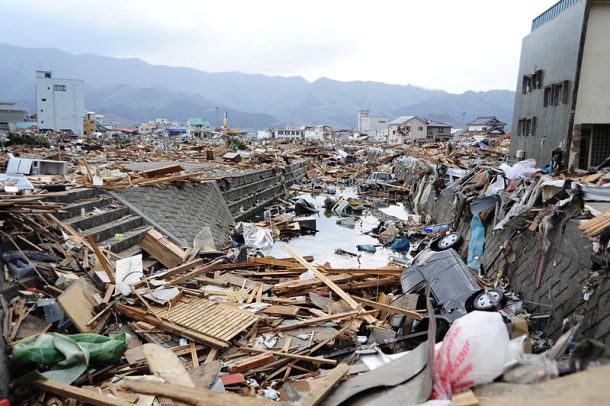 Source: dailymail.co.uk
Source: dailymail.co.uk In 2005, Nagasaki significantly expanded as the surrounding towns of Koyagi, Iojima, Nomozaki, Sanwa, Sotome, and Takashima were merged into it.
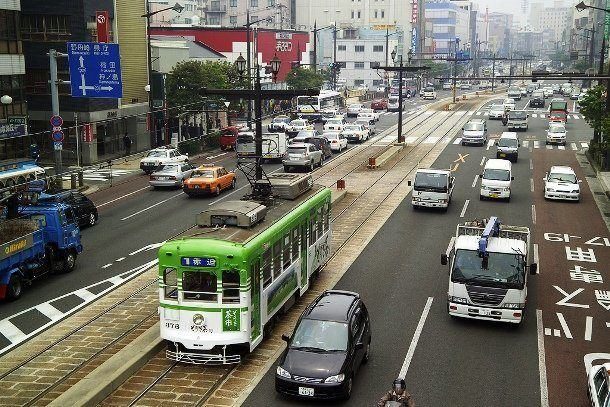 Source: revolvy.com
Source: revolvy.com To many scientists' surprise, a study carried out by molecular biologist Bertrand Jordan has found that the average lifespan of Hiroshima and Nagasaki survivors was reduced by only a few months compared to those not exposed to radiation.
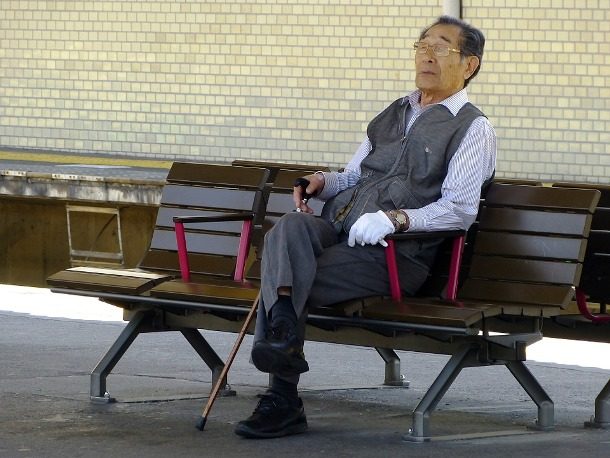 Source: dailymail.co.uk
Source: dailymail.co.uk Hiroshima continues to advocate the abolition of all nuclear weapons, and the Mayor of the city is the president of Mayors for Peace, an international mayoral organization mobilizing cities and citizens worldwide to abolish and eliminate nuclear weapons by 2020.
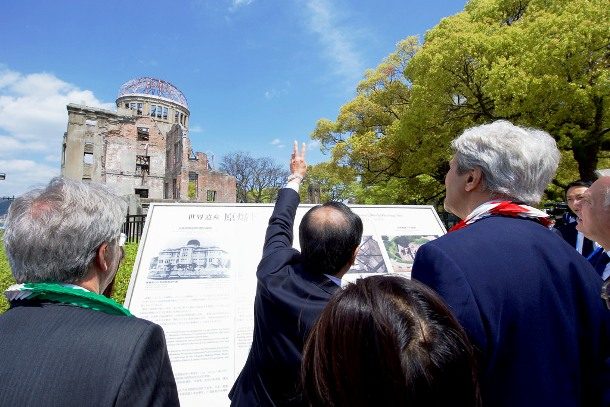 Source: eyewitnesstohistory.com via Wikipedia
Source: eyewitnesstohistory.com via Wikipedia It was not until 1958 when the population of Hiroshima reached 410,000, finally exceeding what it was before the war. Today, the city is home to 1.2 million people.
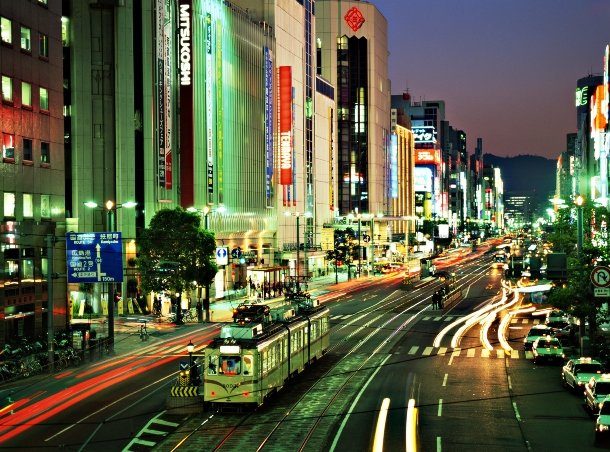 Source: pcf.city.hiroshima.jp
Source: pcf.city.hiroshima.jp Lying at the western edge of the Japanese island of Kyushu (as the country's closest port to China), Nagasaki translates as “long cape.“
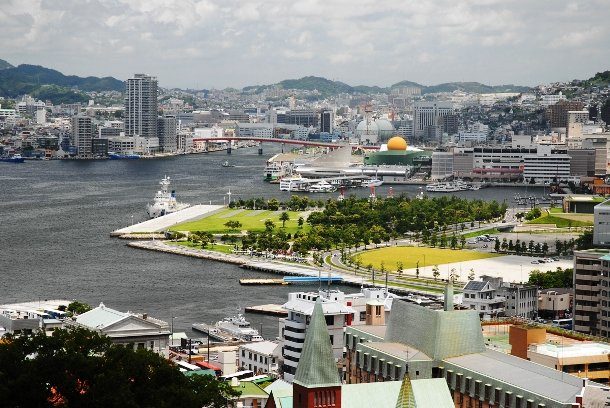 Source: peace-nagasaki.go.jp
Source: peace-nagasaki.go.jp It is estimated that about 10% of victims of the Hiroshima and Nagasaki bombings were Koreans. Most of them were forced laborers making guns and ammunition for the Japanese military. Today, both cities still have large Korean communities.
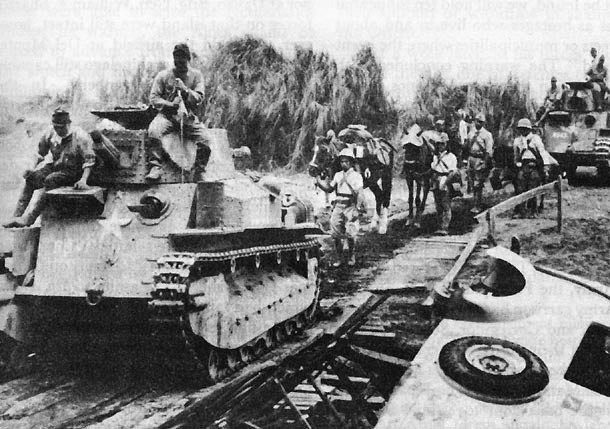 Source: japantimes.co.jp
Source: japantimes.co.jp Contrary to popular belief, no differences in health or mutations rates have been detected among children of Hiroshima and Nagasaki survivors.
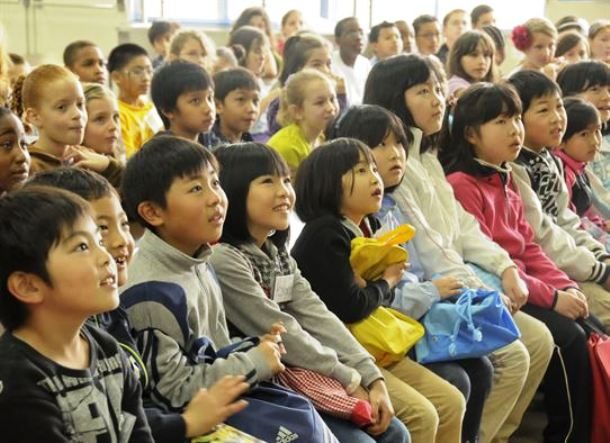 Source: dailymail.co.uk
Source: dailymail.co.uk Ruin of an original building known as the Hiroshima Prefectural Commercial Exhibition in the center of Hiroshima, the A-bomb Dome, currently a part of the Hiroshima Peace Memorial Park, was registered on the World Heritage List in 1996.
 Source: pcf.city.hiroshima.jp
Source: pcf.city.hiroshima.jp Survivors of the bombings and their children have been severely discriminated against, mainly due to public ignorance about the consequences of radiation sickness. It has been very hard for many Hibakushas to get married or find a job as most of the public believes radiation sickness is hereditary or even contagious. Many survivors of the Fukushima Disaster have been facing the same kind of discrimination.
 Source: independent.co.uk
Source: independent.co.uk For decades following the bombings, it was not unusual for parents to hire private detectives to find out if prospective in-laws were Hibakushas.
 Source: news.nationalgeographic.com
Source: news.nationalgeographic.com The blasts of the bombings were so strong that eerie shadows of incinerated humans were left imprinted on steps, pavements, and walls. The haunting impressions were caused by the heat of the explosion, which changed the color of surfaces – hence the outline of bodies and objects that absorbed some of the blast. Some of these shadows can be still seen at the Hiroshima Peace Memorial Museum.
 Source: thesun.co.uk
Source: thesun.co.uk The iconic Japanese giant monster, Godzilla, was originally conceived as a metaphor for the Hiroshima and Nagasaki bombings.
 Source: japantimes.co.jp
Source: japantimes.co.jp Unlike the horrific tolls in mostly flat Hiroshima, the extent of death and destruction in Nagasaki greatly depended on the locations in which people lived. Those who were protected by the Koba Mountain escaped some of the harm.
 Source: study.com
Source: study.com Lists Going Viral Right Now
Photos: 25. yokota.af.mil (public domain), 24. Alvesgaspar, Nerium oleander flowers leaves, CC BY-SA 3.0, 23. wikimedia commons (public domain), 22. pixabay (public domain), 21. The original uploader was Darkone at German Wikipedia, Ginkgo biloba 1, CC BY-SA 2.0, 20. Nagasakibomb.jpg: The picture was taken by Charles Levy from one of the B-29 Superfortresses used in the attack. Atomic_cloud_over_Hiroshima.jpg: Personel aboard Necessary Evil derivative work: Binksternet (talk), Atomic bombing of Japan, CC BY-SA 3.0, 19. wikimedia commons (public domain), 18. alonfloc, 9 Matsuyamamachi, Nagasaki-shi, Nagasaki-ken 852-8118, Japan – panoramio, CC BY 3.0, 17. Heinrich-Böll-Stiftung via flickr, CC BY-SA 2.0, 16. Taisyo, Mazda head office 2008, CC BY-SA 3.0, 15. Nullumayulife via flickr, CC BY 2.0, 14. wikimedia commons (public domain), 13. Hans-Rudolf Stoll via flickr, CC BY 2.0, 12. pixabay (public domain), 11. flickr (us dept work-public domain), 10. Voogd075 from nl, HiroshimaNight, CC BY-SA 3.0, 9. Mstyslav Chernov/Unframe/www.unframe.com, Cityscape of Nagasaki, Nagasaki Prefecture, island of Kyushu, Japan., CC BY-SA 3.0, 8. wikimedia commons (public domain), 7. misawa.af.mil (public domain), 6. O-nd, Hiroshima A-Bomb-Dome, CC BY-SA 3.0, 5. pexels (public domain), 4. pixabay (public domain), 3. thesun.co.uk (fair use: illustrative purposes only; no free images available.) 2. Bandai Namco Entertainment America, GODZILLA The Game – Reveal Trailer – Godzilla B&W 2, CC BY 3.0, 1. wikimedia commons (public domain)



























